It’s Time for Packers to Start Dictating Action
GREEN BAY, Wis. – “All gas, no brake.”
A mic’d up Matt LaFleur famously said that, with an expletive deleted, during a 42-24 rout over the Raiders during the 2019 season. That was LaFleur and Co. doing whatever the hell they wanted in posting a surprise 13-win season.
The Packers need to get back to that dominating mind-set. That starts with LaFleur and his coaching staff doing what they want rather than doing what the opponent wants them to do.
During Sunday’s 27-22 loss in London, Giants defensive coordinator Wink Martindale took one look at Green Bay’s running backs, another look at the receivers and decided to put the ball in Aaron Rodgers’ hands.
That’s typically a suicide mission. Rodgers is one of the greatest quarterbacks in NFL history and he’s coming off back-to-back MVPs. But life is more difficult without Davante Adams. Rodgers has been inaccurate and missing some opportunities, the protection hasn’t always been great, and the comfort of knowing that, whatever the situation, No. 17 will get open has disappeared.
So, the Giants played single-high – something Rodgers practically begged defenses to do a couple weeks ago – and focused on stopping Green Bay’s powerful run game.
It worked. The Giants didn’t stop Aaron Jones and AJ Dillon. Quite the opposite. They combined to average 5.1 yards per carry. Rather, LaFleur and Rodgers stopped Jones and Dillon.
It was like a cheesy horror movie in which the victim, fearing for his or her life, decides to hide in the closet. The victim didn’t have to go to the closet; the Packers didn’t have to stop running the football.
It was a fact LaFleur recognized, albeit after giving away a game that appeared to be won when it was 17-3.
“When the outcome isn’t what you want and Aaron Jones has 13 carries and AJ had six, yeah, it’s hard to sit up here and justify that to everybody, to our team,” LaFleur said on Monday. “We’ve got to be – I’m talking to myself – more disciplined in our approach in terms of making sure that they get the necessary touches throughout the course of the game.”
In a vacuum, it’s hard to fault LaFleur and Rodgers for their play-calling decisions. Just like water takes the path of least resistance, so does a good play-caller. Extra man in the box? Throw the ball. Extra man in the secondary? Run the football. It’s simple stuff. In a game played in the classroom, the man with the marker in his hand last wins.
But football isn’t played in a vacuum or on the markerboard. These aren’t the Packers of 2020 and 2021, when Rodgers and Adams dominated unlike practically any quarterback-receiver combination in the history of football. These are the 2022 Packers. What they do best is run the football and then dial up play-action off those runs. That’s the bedrock of the LaFleur offense that he brought to Green Bay in 2019. LaFleur needs to step on the gas of his running game, not stomp on the brake.
Those chickens came home to roost during the fateful final sequence. Facing (officially) a third-and-1 and fourth-and-1 from the 6, the Packers threw it both times. Were those the right calls? Numerically, yes. But, again, what’s the best path to gain the 2 yards necessary for a first down? Give it to the running backs, who had gained at least 2 yards on every carry, or throw it?
While Martindale dictated the terms against Green Bay’s offense on Sunday, when was the last time a Packers defensive coordinator did the same?
With a sorry history as coordinator in Detroit and Washington in what’s the football equivalent of a lifetime ago, Joe Barry was a curious choice by LaFleur to replace Mike Pettine last offseason. Barry’s defenses at those previous stops were incredibly short on talent. That’s not the case this year. With Kenny Clark, Rashan Gary, De’Vondre Campbell, Jaire Alexander and Adrian Amos, there’s a player in every position group who’s been a Pro Bowler/All-Pro or has played at that level. There isn’t a weak link in the starting lineup, a group that was at full health on Sunday.
There are no excuses to not dominate just about every offense in the NFL, let alone one as poor as the Giants, with their hobbled, below-average quarterback and a receiver depth chart destroyed by injury.
But, Barry’s defense didn’t. It played solid run defense against superstar Saquon Barkley but was terrible in just about every other phase.
Player for player, the Packers should be able to line up and beat just about everyone. Now, it’s a bit more complicated than that but the larger point is accurate. Why not just line up and play and be physical and challenge? Why on earth is Jaire Alexander playing 10 yards off a practice-squad receiver on second-and-19 from just outside of field goal range? Why is Eric Stokes, the fastest guy on the football field most weeks, playing a mile off his man? How are the Packers 21st in the red zone, 22nd in yards allowed per carry, 26th in takeaways and 32nd in passes defensed?
Does Barry need to do more to maximize the unit’s obvious potential?
“Absolutely,” LaFleur said. “I think we all have to do more. I have to demand more. I think we’ve got to coach things better. I think we’ve got to have better urgency. Quite frankly, we need every guy doing their job on every single play.”
That starts at the top, with a realization of the team’s strengths and the trust and belief that what they do best will be enough to win games.
Packers Report Card vs. Giants
Here is our weekly report card after the Green Bay Packers lost to the New York Giants.
Passing Offense
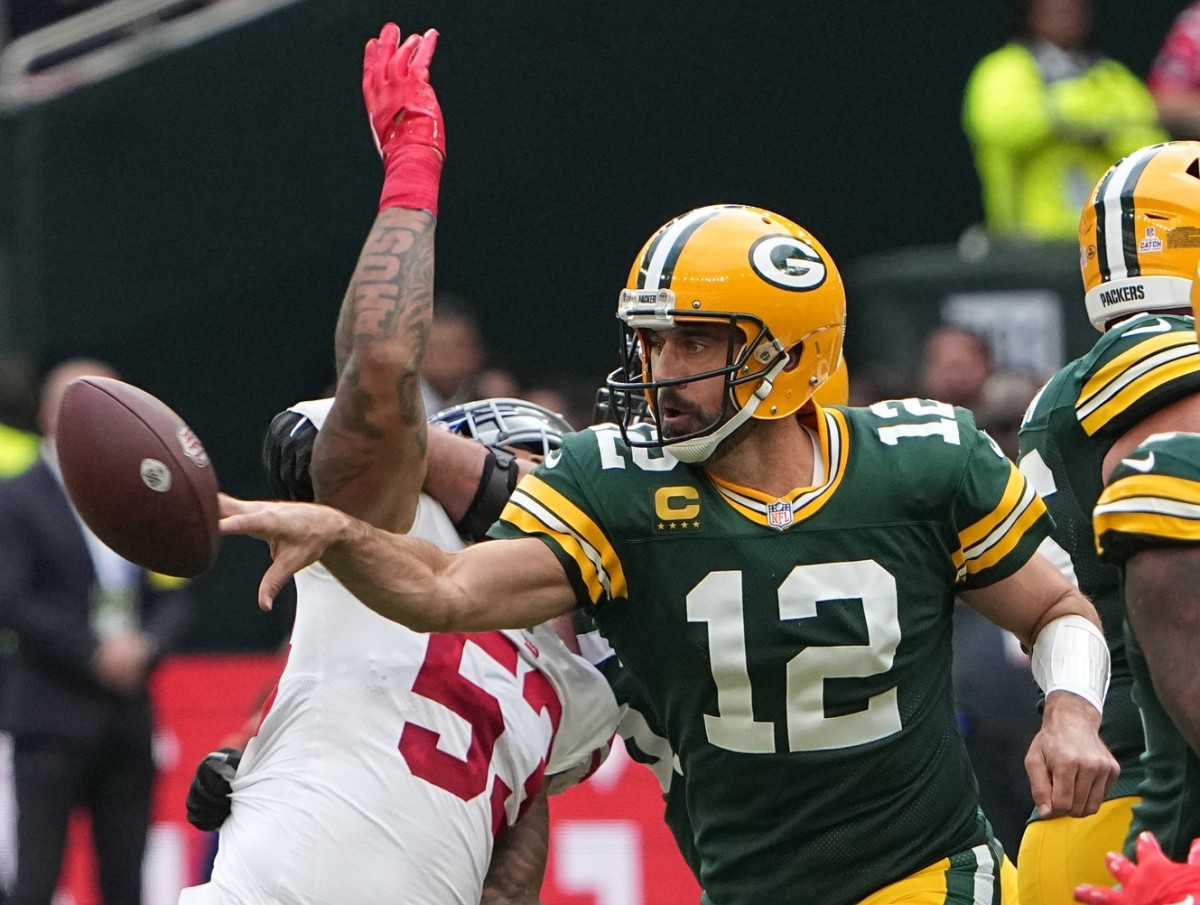
Aaron Rodgers was 25-of-39 passing for 222 yards. His two touchdowns vs. zero interceptions made for an acceptable passer rating of 96.3. The reality is the passing game is almost entirely dependent on quick flips to the receivers. About two-thirds of his yards came after the catch. That’s nice, but only Randall Cobb broke a tackle. Nine of Rodgers’ completions were behind the line of scrimmage. On passes 10-plus yards downfield, he was 4-of-10.
For years, Rodgers has practically begged defensive coordinators to blitz. The Giants blitzed a lot. According to PFF, he was 9-of-17 for 70 yards. At 4.1 yards per attempt, that’s just not enough to make a defensive coordinator change his ways.
Cobb was the main man with seven receptions for 99 yards on 13 targets. He was the only player to average at least 10 yards per catch. The veteran can still play, to be sure, but is it healthy to have the offense running through a 32-year-old slot receiver? While Romeo Doubs caught only 3-of-5 passes for 29 yards, the ball has to go more to the rookie. He’s open.
On the bad three-and-out after the Giants tied the score, two receivers collided on first down and Rodgers just missed Cobb on second down for what would have moved the chains.
There will be other things to focus on this week than the play of right tackle Elgton Jenkins and whether there should be some big switcheroo on the line. Jenkins was really good against the Giants. From a protection standpoint, only right guard Royce Newman gave up a sack.
Grade: D.
Rushing Offense
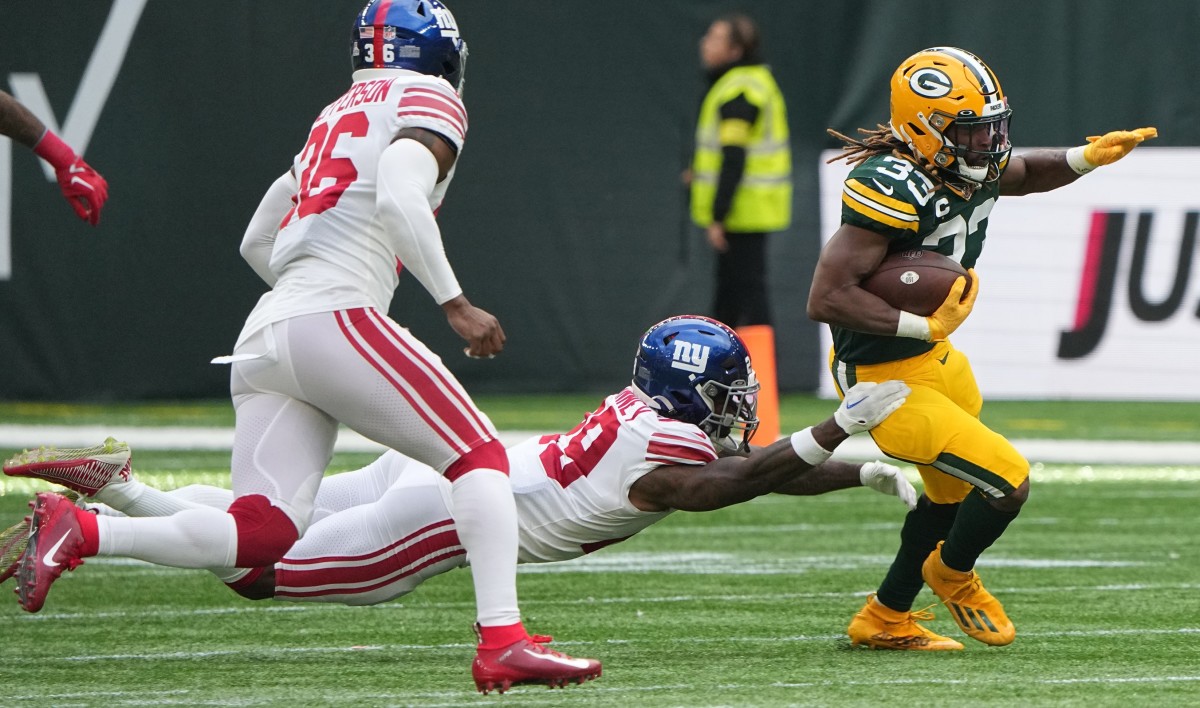
The Packers rushed 20 times for 94 yards. Eliminate a minus-3 for receiver Christian Watson, that’s 19 carries by Aaron Jones and AJ Dillon for 97 yards, a sharp 5.1-yard average. It wasn’t as if that average was inflated by a couple big runs. The Packers’ long run was for only 11; their shortest run (other than Watson) was for 2 yards. That’s high-quality football against an opponent determined to stop the run.
Some weeks, Jones and Dillon pick up a big chunk of the yards on their own via elusiveness or brute force. On Sunday, the blockers did most of the work. The Packers made a lot of hay running to the right behind Elgton Jenkins and Royce Newman. Romeo Doubs had an excellent day. These weren’t runs, per se, but it was Doubs who helped fuel the touchdown pass to Allen Lazard and a completion to Randall Cobb the 2 to set up the other touchdown.
Grade: A-minus.
Passing Defense
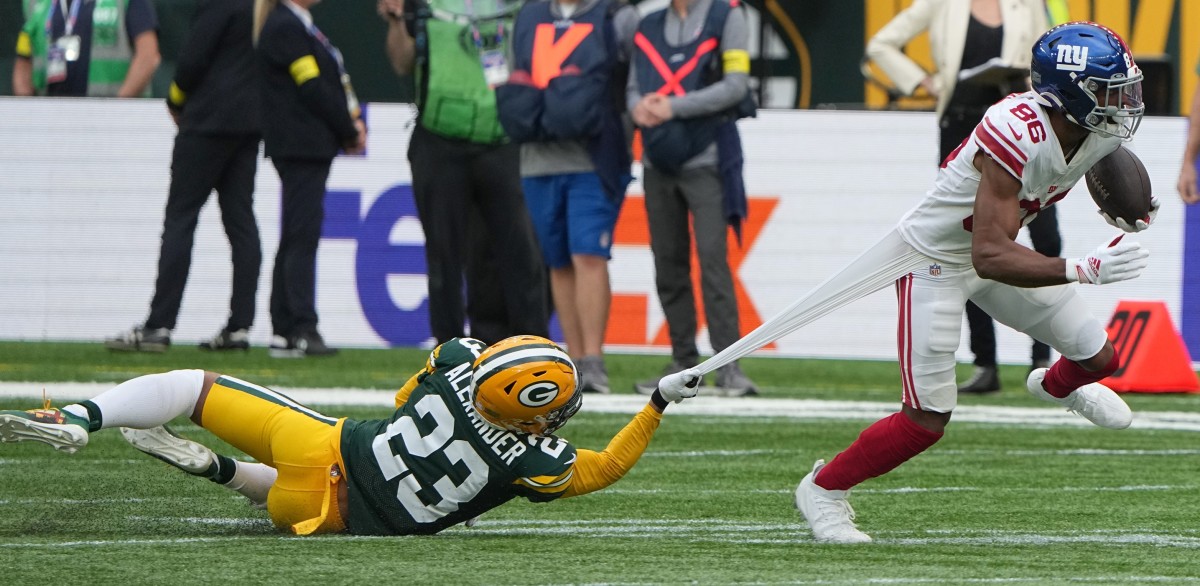
Awful. Daniel Jones – who most Giants fans would label as a bust – completed 21-of-27 passes for 217 yards. There are who’s-who receiver corps and then are who’s-that receiver corps. With their top three out with injuries, this was the latter. Darius Slayton, who had one catch all season, caught 6-of-7 targets for 79 yards. He was just too fast.
As was the story in Minnesota in Week 1, it wasn’t as if the Giants were making a bunch of outrageous catches. They were open, they caught the ball and they sprinted for more yards. Green Bay’s supposedly elite secondary was flagged for four penalties – three by Rasul Douglas – and didn’t break up a single pass. Safety Darnell Savage was guilty of a penalty and whiffed on Saquon Barkley to account for about half of the 41-yard gain.
Preston Smith had the only sack and three of the four quarterback hits; penalties wiped out sacks by Rashan Gary and Jarran Reed.
Grade: F.
Rushing Defense
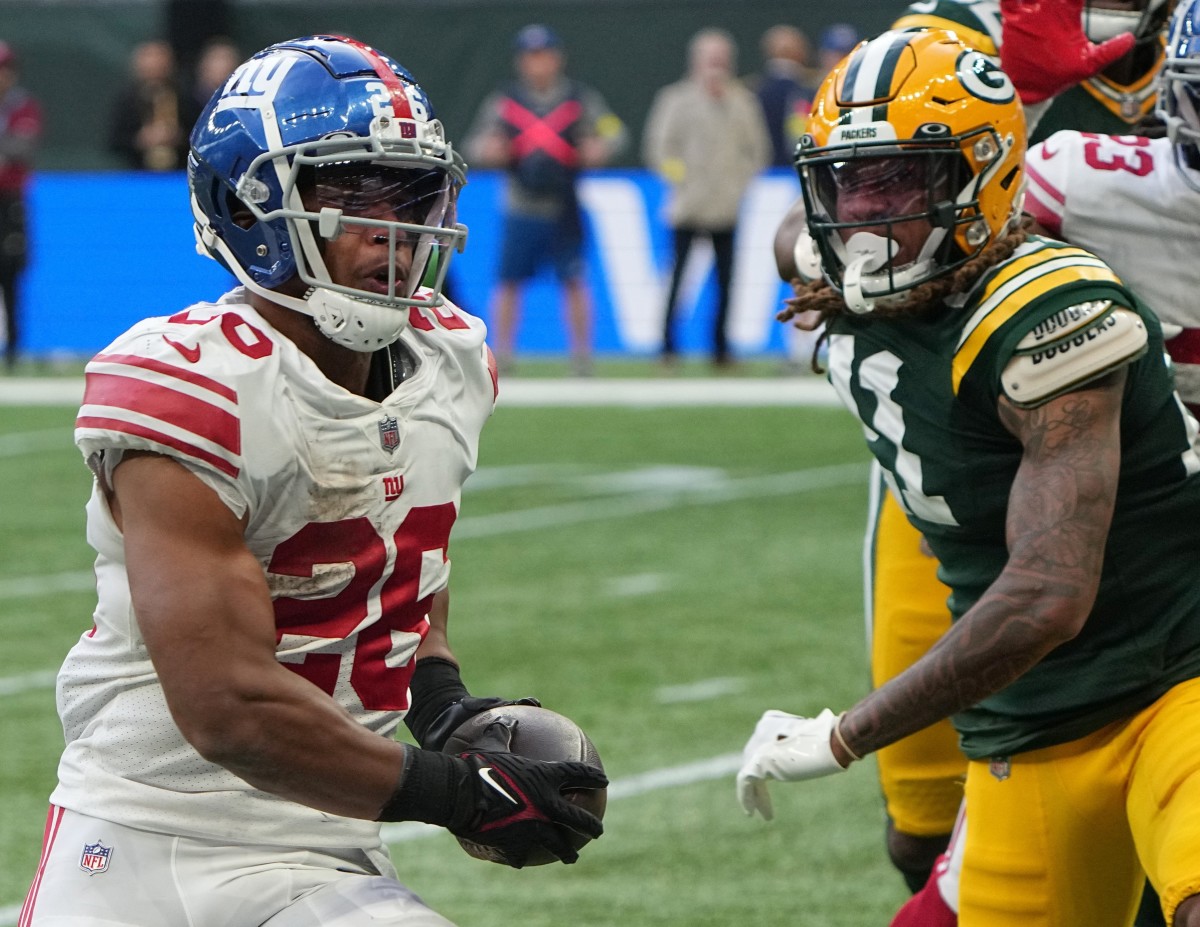
Green Bay’s Aaron Jones ran 13 times for 63 yards, a 4.8-yard average. New York’s Saquon Barkley ran 13 times for 70 yards, a 5.4 average. So, who had the better day? By average, Barkley. But Barkley’s day was padded by a 40-yard run. His other 12 carries gained 30. A guy like Barkley is going to make his plays. So, this was a solid day at the office.
With the punter’s safety taken out of the equation, the Giants ran 30 times for 128 yards with touchdowns by Barkley, backup Gary Brightwell and tight end Daniel Bellinger.
Was it better than last week vs. New England? By miles, especially in terms of edge-setting. Defensive tackles Kenny Clark and TJ Slaton had good days, too. Was it good enough? No. There was only one run for 0 or negative yards.
Grade: C-plus.
Special Teams
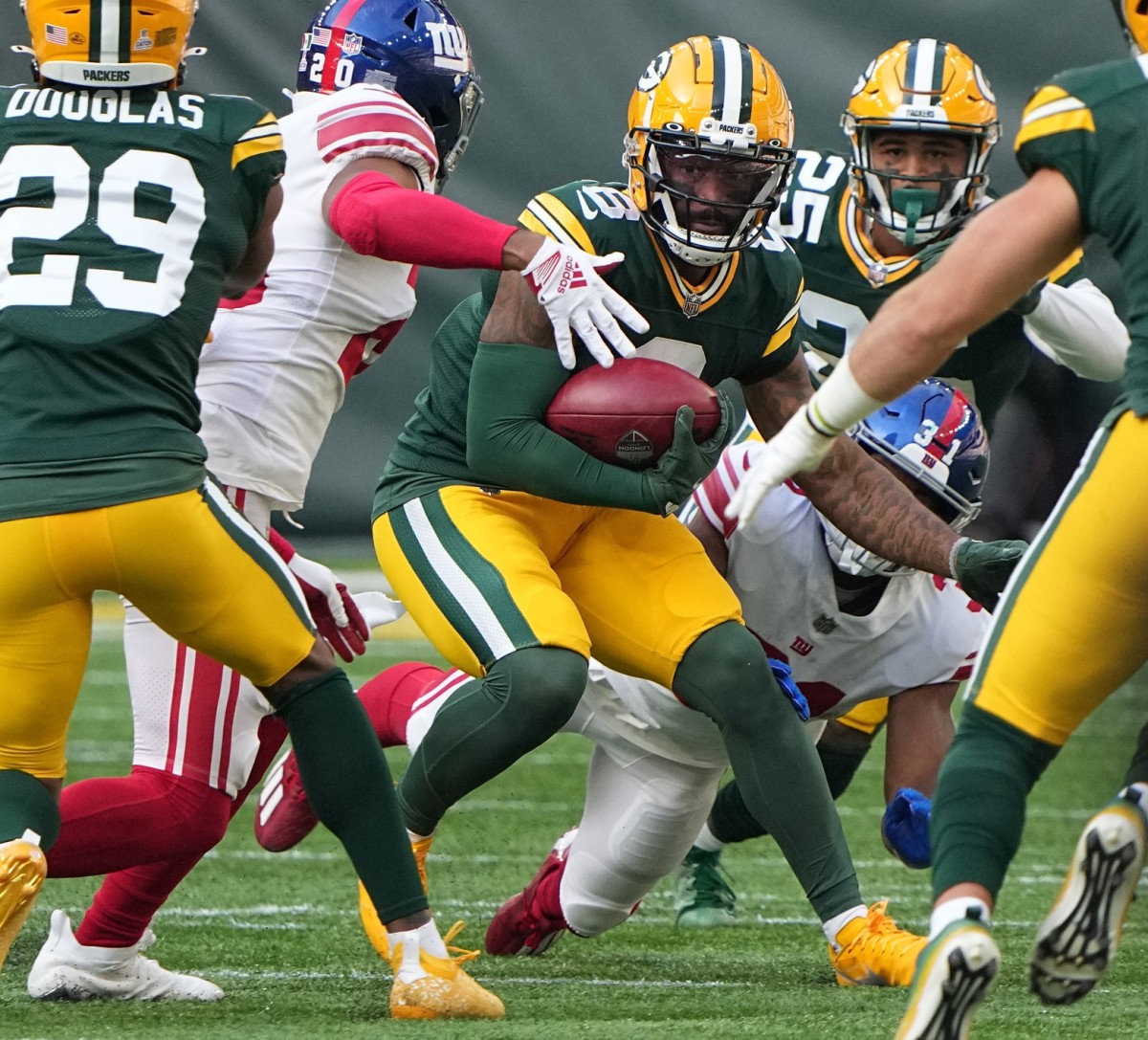
Green Bay’s kickoff coverage was strong. On Mason Crosby’s four kickoffs, the Giants’ average starting point was the 22. Punter Pat O’Donnell punted three times, allowed 0 return yards, had a 41.3-yard net average and pinned the Giants at the 9 late in the third quarter.
On the other hand, Christian Watson looked tentative on his first chances as kickoff returner, Amari Rodgers fumbled his only punt return and Keisean Nixon failed to recover what might have been the game-turning muffed punt. With Watson’s latest hamstring injury and Rodgers’ fumble, the return game is a mess.
Grade: C.
Coaching
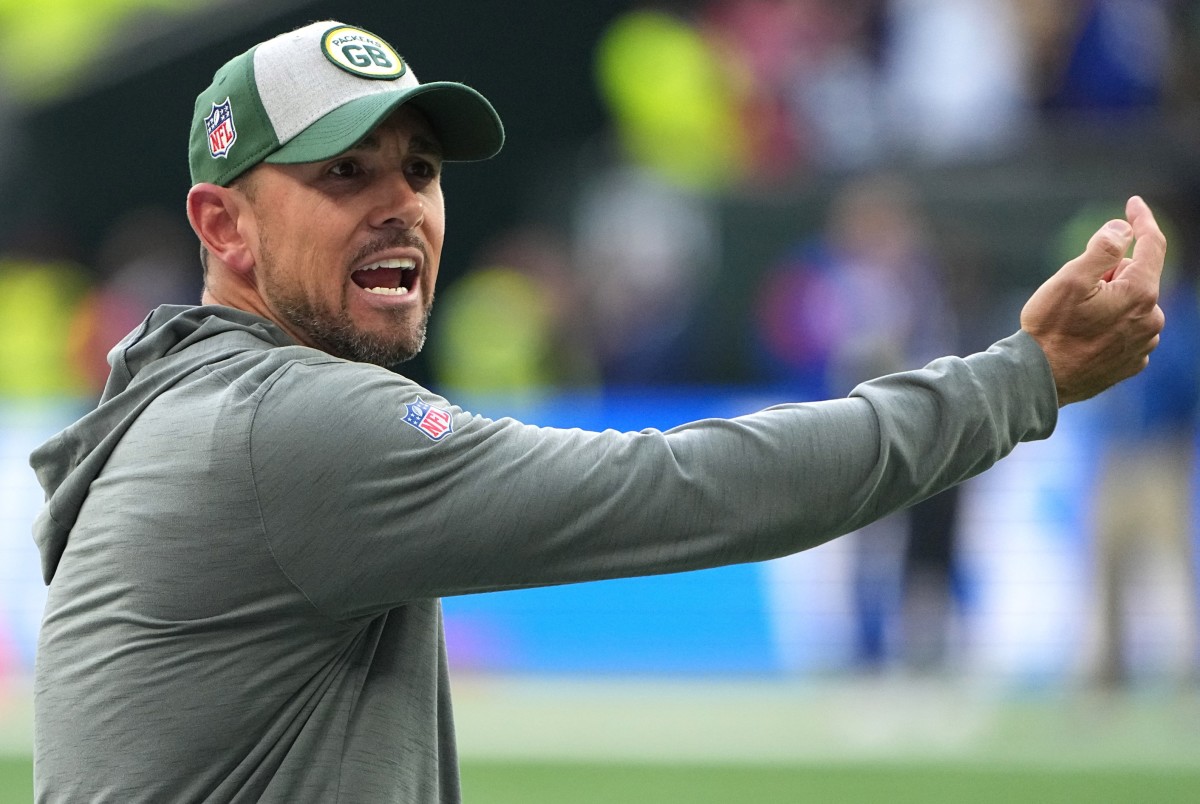
The only man who could stop Aaron Jones was coach Matt LaFleur. Jones is the team’s best offensive player. A total of 16 opportunities (13 runs, two receptions, one incompletion) just isn’t good enough given his production and what was at stake.
The only man who can turn Daniel Jones and Darius Slayton into Eli Manning and Hakeem Nicks is Joe Barry. If Jones can lead that injury-plagued offense to 27 points, how many points are Josh Allen and the mighty Bills going to score in three weeks?
The offense doesn’t have an identity and the defense doesn’t seem able to take advantage of its perceived personnel advantages.
These next two games, at home against the Jets (3-2) on Sunday and at the Commanders (1-4), are absolutely vital. They’re two winnable games. Then again, if you’re Jets coach Robert Saleh or Commanders coach Ron Rivera, you’re probably thinking the same. At least they’ll be at home to face the Jets so LaFleur won’t have to grumble about the travel.
Grade: F.
Packers-Giants Related Stories
LaFleur faces the Monday music
Packers-Giants Week 5 report card
Three reasons to worry following London debacle
Packers ignored their best playmakers, Jones and Dillon, in key moments
Another week of good offense, bad offense
Packers’ defense a giant-sized disappointment
Watch: Packers-Giants highlights
